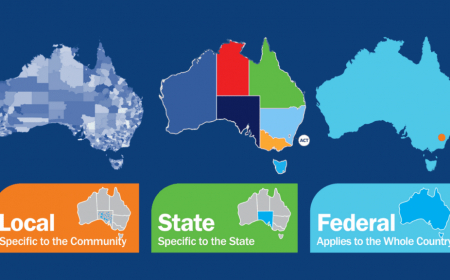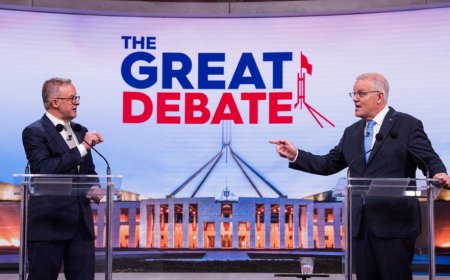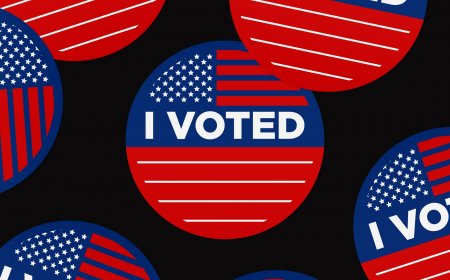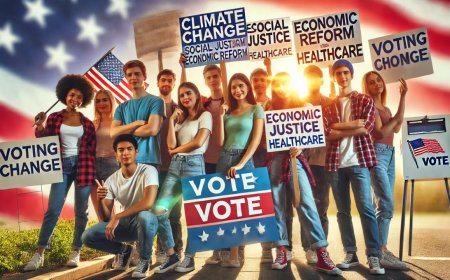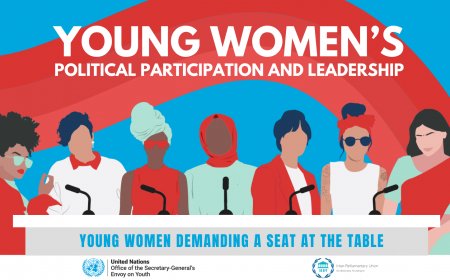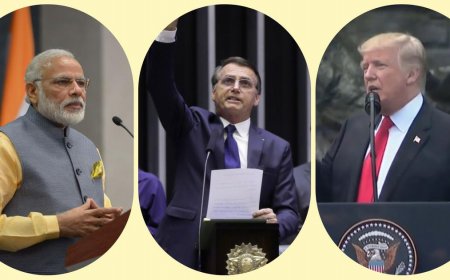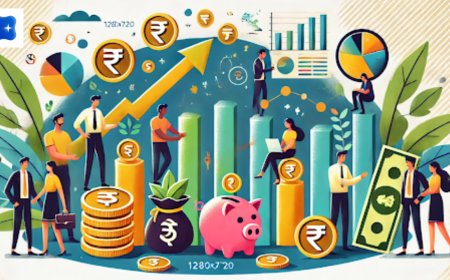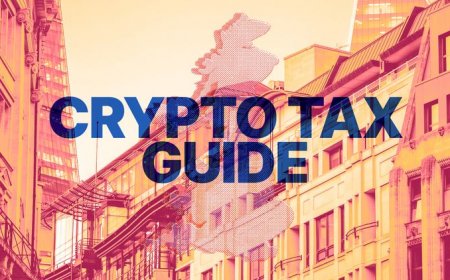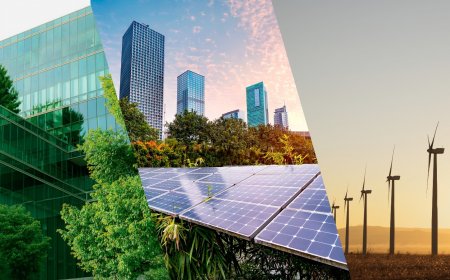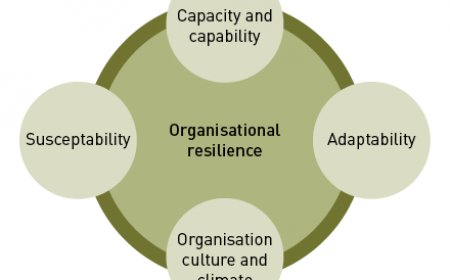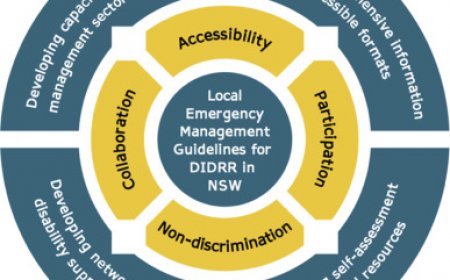Politics: Media Influence on Public Opinion and Policies
Explore the intricate dynamics of media influence on public opinion and policies . Dive into historical contexts, theoretical frameworks, and future trends shaping modern governance.
In today’s hyper-connected world, the role of media in shaping public opinion and influencing policies is both profound and pervasive. As we navigate an era dominated by information, understanding how media operates as a powerful tool becomes essential for individuals, policymakers, and society at large. This article delves into the intricate relationship between media, public sentiment, and governmental decisions, exploring its historical roots, modern manifestations, and future implications. By examining theories like agenda-setting and framing, analyzing real-world examples, and addressing challenges such as misinformation and polarization, we aim to provide a comprehensive overview of this critical topic.
The Historical Evolution of Media's Role in Politics
Early Beginnings: From Print to Broadcast
The journey of media as a political influencer began centuries ago with the advent of the printing press in the 15th century. Johannes Gutenberg’s invention revolutionized communication by enabling mass production of written materials, making information accessible to a broader audience. Newspapers became the primary source of news, offering citizens insights into local and global events.
During this period, media acted as a gatekeeper , controlling what information reached the public. For instance, pamphlets during the American Revolution played a pivotal role in rallying support against British rule. Similarly, newspapers in Europe fueled debates surrounding industrialization, social reforms, and colonialism. The ability of print media to disseminate ideas quickly made it an indispensable tool for political movements and reformers.
The Rise of Broadcast Media
The introduction of radio and television in the 20th century marked a significant shift in how media influenced politics. Radio allowed leaders to communicate directly with their constituents, fostering trust and transparency. Franklin D. Roosevelt’s “Fireside Chats” exemplified this trend, as he used radio broadcasts to explain complex policies in simple terms, building a personal connection with the American public.
Television further amplified this effect during landmark moments like the Kennedy-Nixon debates in 1960. These debates demonstrated the power of visual appeal, as viewers perceived John F. Kennedy’s charisma and composure more favorably than Richard Nixon’s nervous demeanor. This event underscored the growing importance of image and presentation in political campaigns, setting the stage for modern electoral strategies.
Digital Revolution: A New Era
The internet has transformed media consumption patterns, giving rise to digital platforms such as social media, blogs, and podcasts. Unlike traditional outlets, these platforms allow users to engage actively, creating a two-way flow of information. Citizens are no longer passive consumers; they can now participate in discussions, share opinions, and even create content themselves.
However, this democratization also brings challenges. Social media algorithms prioritize sensational or emotionally charged content, leading to the rapid spread of misinformation. Additionally, the sheer volume of available information makes it difficult for users to discern credible sources from unreliable ones. Despite these drawbacks, the digital revolution has undeniably reshaped how media influences politics.
Tip: Understanding the evolution of media helps us appreciate its current influence. Recognizing past trends can guide us in navigating today’s complex media landscape.
How Media Shapes Public Opinion
Agenda-Setting Theory
One of the most prominent theories explaining media’s impact is agenda-setting. According to this theory, media doesn’t tell people what to think but rather what to think about. By highlighting specific issues while ignoring others, media outlets subtly direct public attention toward particular topics.
For example, extensive coverage of climate change has elevated environmental concerns globally. Conversely, underreporting certain crises—such as humanitarian disasters in remote regions—may lead to diminished public awareness or urgency. Agenda-setting demonstrates how media acts as a filter, determining which issues gain prominence in public discourse.
Framing Effects
Beyond setting agendas, media influences how audiences perceive issues through framing. Framing involves presenting information in ways that emphasize certain aspects over others. For instance, portraying immigration as either a humanitarian issue or a security threat shapes public attitudes accordingly.
A study conducted by Pew Research Center revealed that framing immigration positively correlates with increased public support for pro-immigrant policies. This demonstrates the power of narrative construction in driving societal values. Politicians often leverage framing techniques to sway public opinion in favor of their agendas, whether it’s promoting economic growth or advocating for social justice.
Emotional Appeals
Emotions play a crucial role in media’s ability to sway opinions. Stories filled with emotional triggers—such as fear, hope, or anger—are more likely to resonate with viewers. During election campaigns, candidates often leverage emotional storytelling to build rapport with voters.
For instance, Barack Obama’s 2008 campaign emphasized themes of hope and change, appealing to Americans’ aspirations for a better future. Similarly, Donald Trump’s rhetoric focused on fear and nationalism, tapping into anxieties about immigration and globalization. Emotional appeals not only capture attention but also foster loyalty among supporters.
Media’s Influence on Policy-Making
Direct Impact Through Advocacy
Media serves as a watchdog, holding governments accountable and advocating for policy changes. Investigative journalism has uncovered scandals ranging from Watergate to corporate malpractices, prompting legislative action.
For example, Edward Snowden’s revelations about government surveillance led to widespread debates on privacy rights, eventually influencing data protection laws worldwide. Similarly, exposés on corruption within political systems have resulted in resignations, prosecutions, and institutional reforms.
Indirect Influence via Public Pressure
Even when not directly involved in policymaking, media indirectly affects decisions by mobilizing public opinion. Grassroots movements like #MeToo gained momentum through viral stories shared across platforms, pressuring institutions to address systemic issues.
Similarly, campaigns promoting vaccination during pandemics rely heavily on media outreach to dispel myths and encourage compliance. Public pressure generated by media coverage often forces policymakers to act swiftly, ensuring alignment with societal expectations.
Case Study: Climate Change Policies
Climate change offers a compelling case study of media’s dual role in advocacy and education. Documentaries like Al Gore’s An Inconvenient Truth brought scientific findings to mainstream audiences, sparking global conversations. Subsequent media coverage pressured governments to adopt greener policies, culminating in international agreements like the Paris Accord.
The success of climate activism groups like Extinction Rebellion highlights the synergy between grassroots efforts and media amplification. By leveraging both traditional and digital platforms, these organizations have successfully pushed climate issues onto national and international agendas.
Challenges Posed by Modern Media
Misinformation and Fake News
While media empowers citizens, it also poses risks. The proliferation of fake news undermines trust in credible sources and distorts reality. Social media algorithms prioritize sensational content, exacerbating polarization and confusion.
Efforts to combat misinformation include fact-checking initiatives and regulatory measures. Platforms like Facebook and Twitter have introduced labels to flag false information, while independent organizations verify claims made by politicians and influencers. However, striking a balance between freedom of speech and accountability remains challenging.
Echo Chambers and Polarization
Digital platforms enable users to curate personalized feeds, reinforcing existing beliefs and isolating dissenting views. This phenomenon creates echo chambers, where individuals rarely encounter opposing perspectives.
Such fragmentation hinders constructive dialogue, making consensus-building difficult in democratic societies. Bridging divides requires fostering media literacy and encouraging exposure to diverse viewpoints.
Ethical Considerations in Media Reporting
Balancing Objectivity and Bias
Journalists face constant pressure to maintain objectivity while catering to diverse audiences. Ethical reporting requires careful consideration of language, tone, and context to avoid perpetuating stereotypes or biases.
Transparency about funding sources and editorial processes builds credibility. Independent media organizations often excel in maintaining impartiality compared to those tied to corporate interests.
Responsibility in Crisis Coverage
During crises, responsible reporting becomes paramount. Sensationalism can incite panic, whereas accurate, timely updates foster resilience. The COVID-19 pandemic highlighted the importance of clear communication in managing public health emergencies.
Media outlets played a vital role in disseminating guidelines, debunking myths, and providing updates on vaccine rollouts. Responsible journalism ensured that communities stayed informed without succumbing to hysteria.
Future Trends in Media and Politics
Artificial Intelligence and Automation
AI technologies are reshaping media production and consumption. Automated tools assist in analyzing data, generating reports, and personalizing content. While enhancing efficiency, they raise ethical questions about job displacement and algorithmic bias.
For example, AI-driven analytics help identify trending topics, enabling journalists to focus resources on high-impact stories. However, reliance on automation risks homogenizing narratives and marginalizing nuanced perspectives.
Virtual Reality and Immersive Experiences
Emerging technologies like virtual reality (VR) promise immersive storytelling experiences. Imagine experiencing historical events firsthand or exploring policy impacts through interactive simulations. Such innovations could deepen engagement and empathy among audiences.
Educational institutions and advocacy groups are already experimenting with VR to simulate scenarios like refugee crises or environmental degradation. By immersing users in these experiences, VR fosters understanding and motivates action.
Review: Verdict
The symbiotic relationship between media, public opinion, and policies underscores the need for critical literacy. As consumers of information, we must discern credible sources from unreliable ones. Policymakers, too, must recognize media’s potential as both ally and adversary in governance.
By fostering transparent, ethical practices, media can continue serving as a cornerstone of democracy. Simultaneously, addressing challenges like misinformation and polarization ensures its positive contributions outweigh drawbacks.
Conclusion
Understanding the profound influence of media on politics enriches our grasp of contemporary governance. Whether through agenda-setting, framing, or emotional appeals, media wields immense power in shaping collective consciousness. Navigating this landscape demands vigilance, responsibility, and adaptability.
As we move forward, embracing technological advancements while upholding journalistic integrity will define the future of media’s role in society. Let us strive for informed discourse and equitable representation, ensuring media remains a force for good.
10 FAQs with Answers
-
What is agenda-setting theory?
Agenda-setting theory suggests that media determines which issues receive public attention without dictating opinions. -
How does framing affect perception?
Framing presents information in specific contexts, influencing how audiences interpret messages. -
Why is emotional appeal effective in media?
Emotions evoke strong reactions, making content memorable and persuasive. -
Can media directly influence policy-making?
Yes, investigative journalism often exposes issues, prompting legislative responses. -
What are echo chambers?
Echo chambers occur when individuals only encounter viewpoints aligning with their own, limiting exposure to diversity. -
How does misinformation spread online?
Misinformation spreads rapidly due to viral sharing mechanisms and lack of verification. -
What role does AI play in modern media?
AI automates tasks like data analysis and content generation, improving efficiency but raising ethical concerns. -
Is objectivity achievable in journalism?
Complete objectivity is challenging; however, striving for fairness and accuracy enhances credibility. -
How can I identify fake news?
Cross-check facts using reputable sources and scrutinize author credentials. -
What is the future of VR in media?
Virtual reality offers immersive storytelling opportunities, potentially transforming audience engagement.
What's Your Reaction?
 Like
0
Like
0
 Dislike
0
Dislike
0
 Love
0
Love
0
 Funny
0
Funny
0
 Angry
0
Angry
0
 Sad
0
Sad
0
 Wow
0
Wow
0



